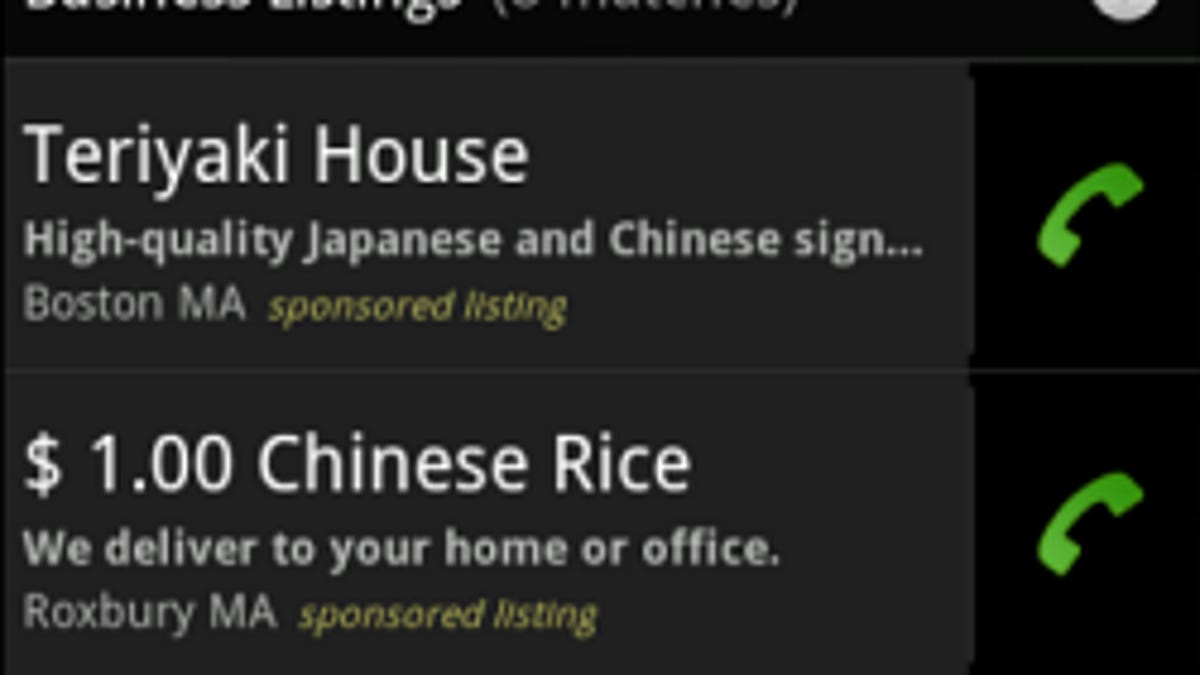Vlingo's SuperDialer aims to be an Android 411
Voice-command app Vlingo adds a new feature to its Android software, which lets you search for and call business listings with your voice.

If you own an Android phone, you already know how to use Vlingo's SuperDialer, a beta feature that expands the app's vocally triggered "call" command to search not just your personal phone book, but also a wider directory of businesses.
Tap Vlingo's home screen widget and speak out the name of the business or category of business you'd like to call, for example "Call Little Star Pizza" or "call pizza." (Omitting the "call" command will trigger the default Google search, but not the SuperDialer's business listings.)
Vlingo then returns a list of results from your phone book and from its own directory. You'll press the green icon of a phone to directly dial the business. Or, you'll tap the business name to get an aggregated summary page with reviews, the address, and tabs to call the business, view it on a map, navigate, or look up its Web site, if available.
At first, Vlingo's SuperDialer sounds like a redundancy of Google's voice search, which comes preinstalled with most of today's Android phones.
However, there are differences. Start a voice search for a business name in Google, and in most cases you'll see a Place listing surface, with ratings, a map, and a phone number you can click to call. Search in Vlingo, and you'll get a summary screen that's better integrated with Google Maps Navigation than Google's own search. In fact, you can also ask for directions outright with a "directions" command.
We tested Vlingo's voice search widget side-by-side with Google's similar widget, and as long as there's a Google results summary for the same business, and we remembered to precede our search with the word "call" with Vlingo, it was possible to dial a business using both services in just two taps. We should note that Vlingo does not use Google's search engine to seek out business listings.
The other benefit that Vlingo presents is the rest of the Vlingo app itself, which obeys voice commands to draft a text message, update Facebook or Twitter status, or compose e-mail, in addition to browsing the Web and business directories. It can also launch third-party applications (though not always precisely, in our experience) and read your incoming e-mails and texts while you drive.
Vlingo is a premium product at a limited-time $9.99 one-time fee in the Android Market, and in our view the SuperDialer doesn't best Google's own voice search enough to warrant a purchase on the call command functionality alone. But if you're already a Vlingo user, or want to be, the SuperDialer is certainly a neat expansion of the Vlingo app for U.S. and Canadian residents. Vlingo works on Android phones running 2.0 of the operating system or higher.

